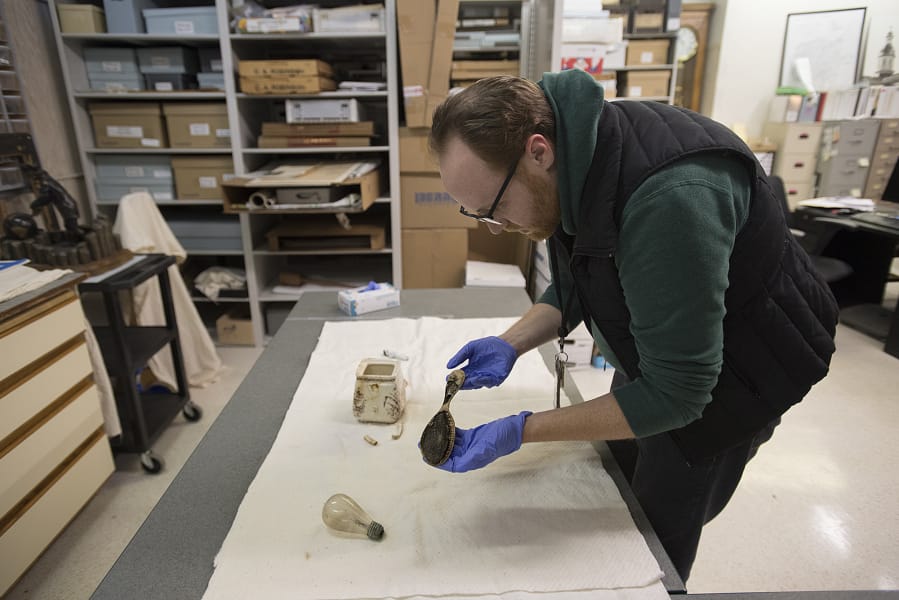Battle Ground’s Jake Bechtel and his family were just moving into his new home this summer and, on a lark, he did some exploring on the Clark County assessor’s office website.
His property, he discovered, had a high probability of having some kind of archaeological significance, according to the county.
“I start thinking about the tribes that lived around here, and what tribes there were,” he said.
“Who knows?” he said with a laugh. “Maybe Lewis and Clark came through here.”
“What does that mean, though?”
Most of Clark County, actually, is considered to have some probability for possible archaeological significance, said Jan Bazala, a land-use planner with the county.
“Generally speaking, it’s not a rare occurrence,” he said.
To calculate those odds, the county uses a model formulated by the state, said Gretchen Kaehler, the local government archaeologist at the Washington State Department of Archaeology and Historic Preservation.
“We use math, we use known sites, we use landforms, ethnographic reports, all that kind of information goes into a predictive model,” she said.
State law protects archaeological sites, whether on public or private land, so as to preserve and protect the state’s history. Artifacts and resources found on public land are property of the state, while any finds on private land belong to the property owner.
The Department of Archaeology and Historic Preservation has more than 27,000 archaeological sites on file, with more than 800 of those in Clark County. The oldest site reports on file date to the 1890s, and the office records an average of 30 new sites each month.
Although the county has a rich history, from the many Native American groups and, later, the white settlers who called it home, a “high” probability doesn’t mean there’s any history buried under Bechtel’s backyard.
What the designations really do, Bazala said, is they guide whether a builder needs to check to make sure there isn’t anything of archaeological significance going on under a planned project.
For the builder, that means getting a determination as to whether a more thorough examination, or a full-on dig, of a site is needed to protect any possible historical resources.
A lot of that typically means doing research in archived documents, walking sites and, maybe doing some test digs, Bazala said, all done by a qualified archaeologist.
Generally, he said, if someone is going to do some kind of substantial digging, they’ll in most cases have to get an archaeological predetermination and file some paperwork with the state.
The county hasn’t had a staff archaeologist for some time, and although he’s a planner and not an archaeologist, most site reviews don’t go beyond the initial research and site checks, Bazala said.
He estimated 80 percent of them don’t turn up anything.




